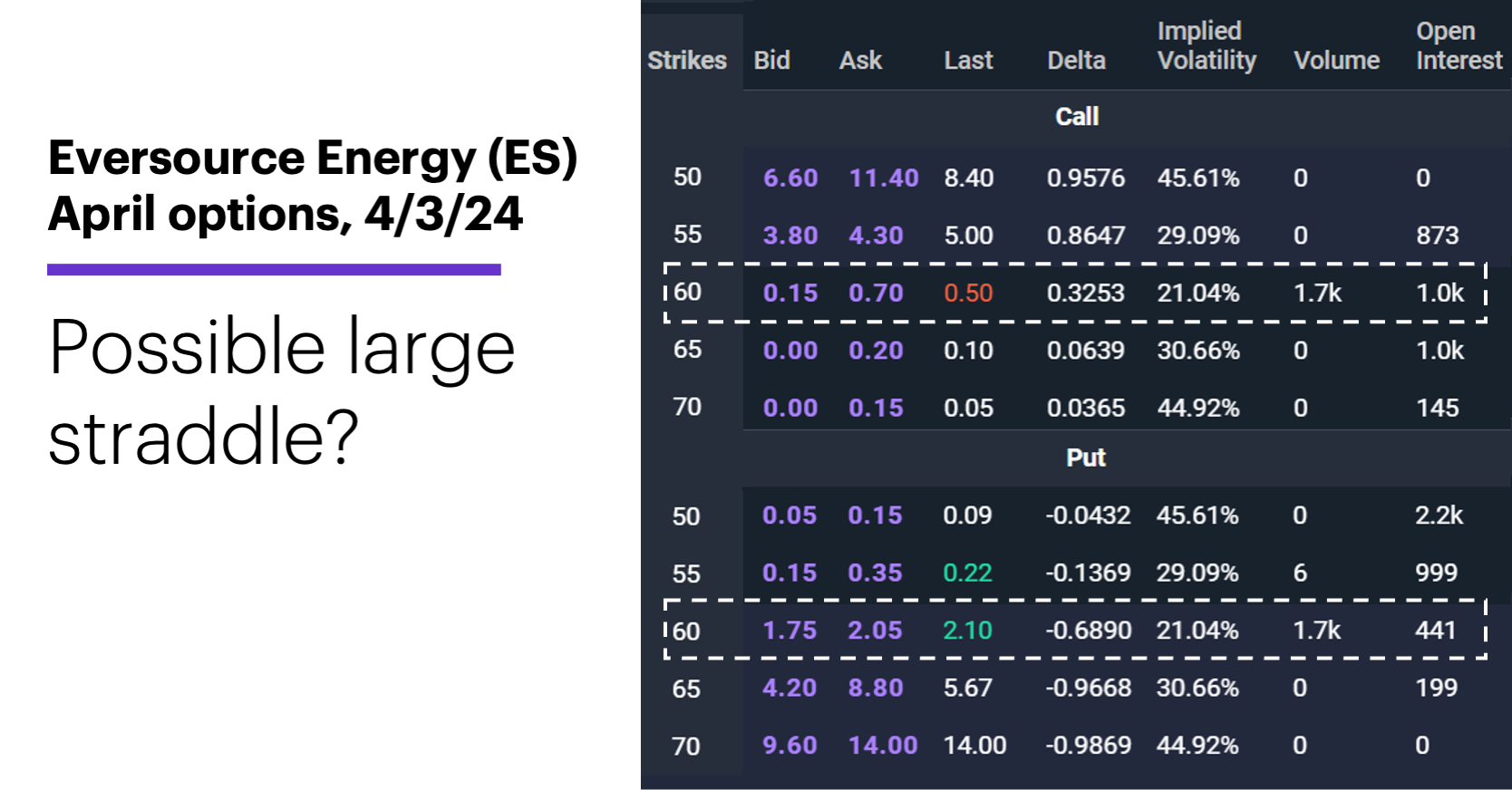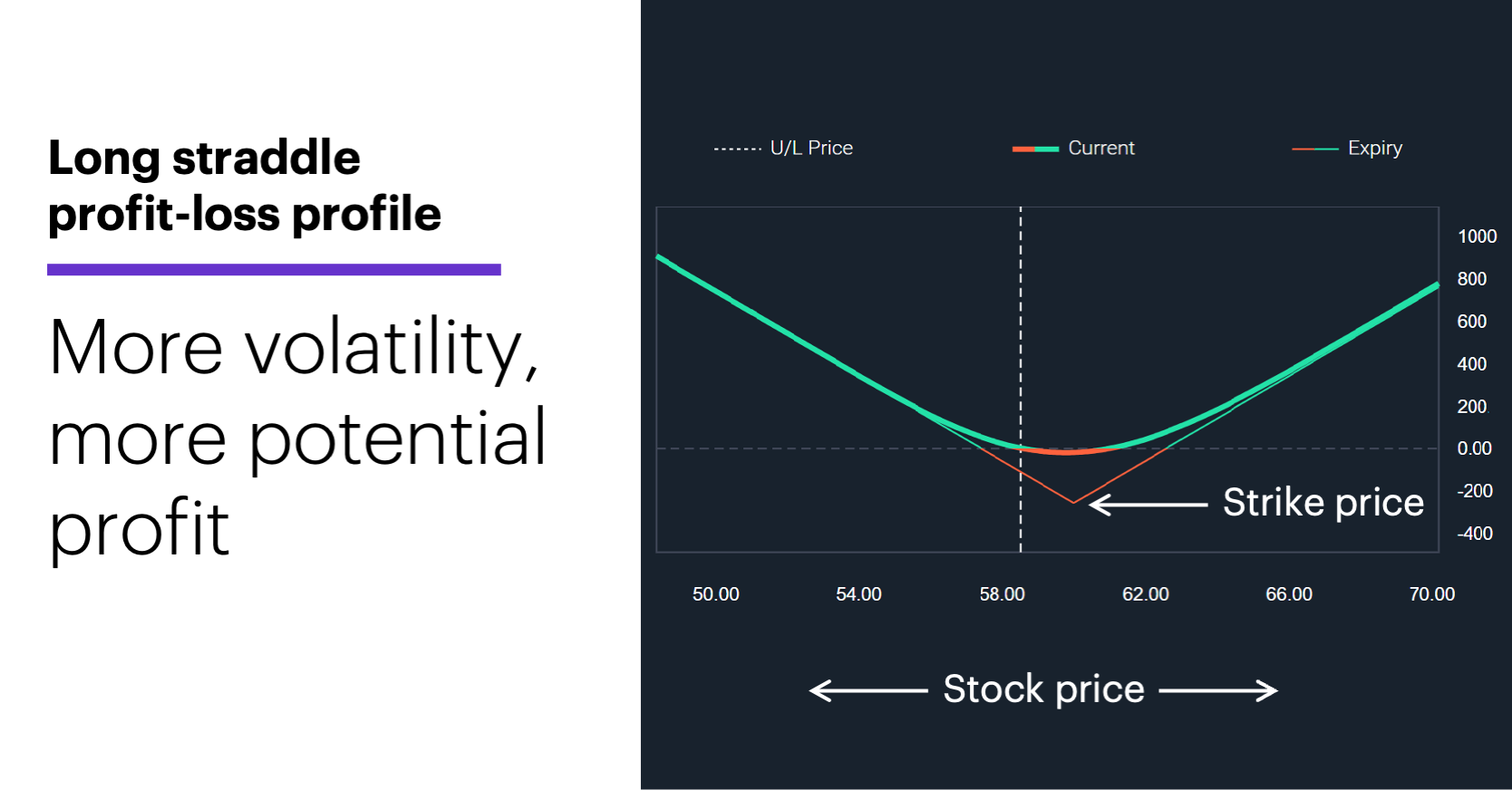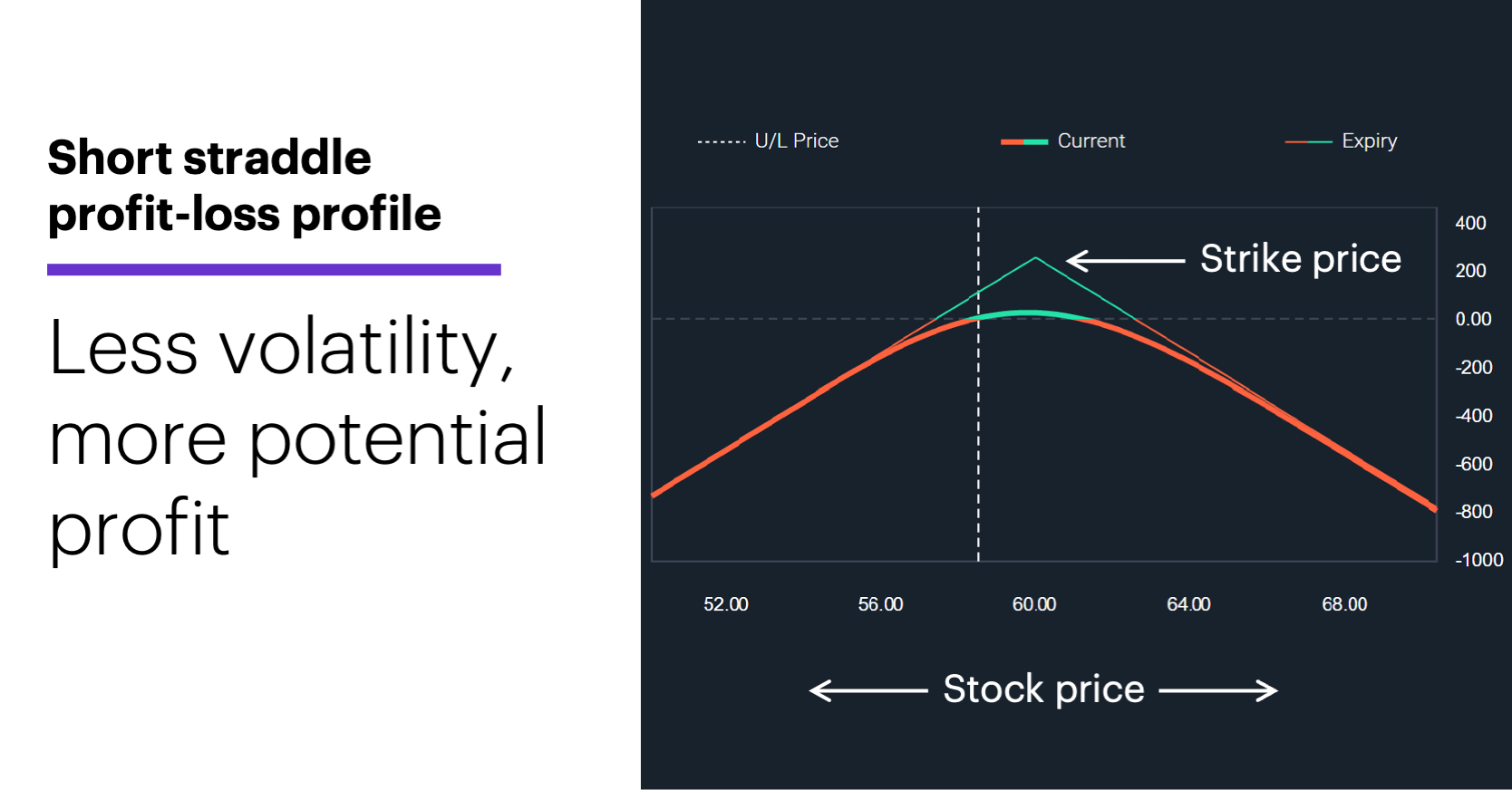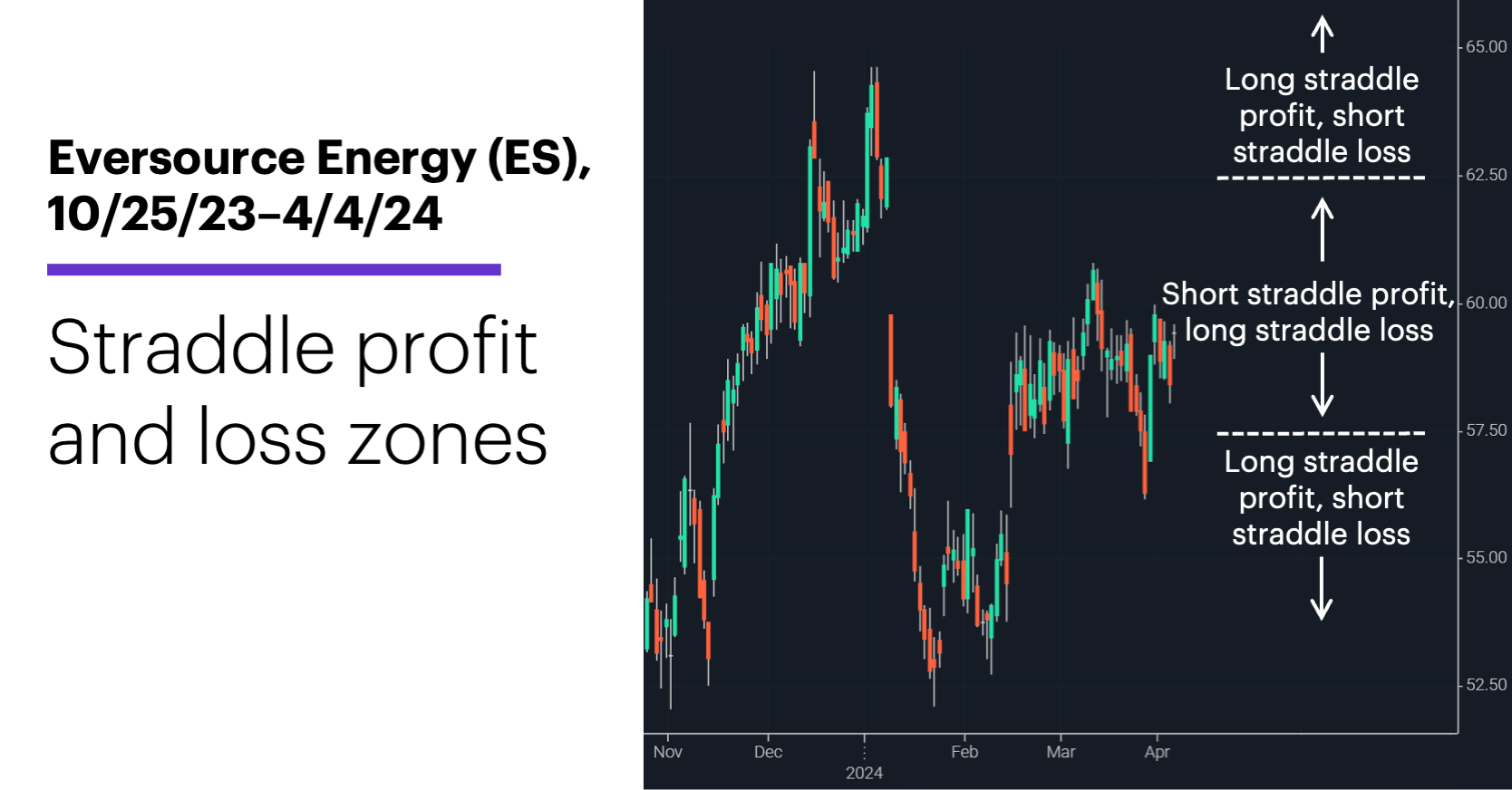Breaking down a straddle
- Large trades appeared this week in ES April options
- Stock has been trading sideways since mid-Feb.
- Traders interested in direction of price or volatility?
Utility stocks aren’t generally known for their exciting behavior, but there are exceptions to every rule.
Eversource Energy (ES), a utility stock specializing in renewable technologies, may be one of this week’s more interesting storylines—at least for traders tracking options activity.
On Wednesday, with ES shares down roughly 1% in early trading (roughly $58.50-$59), identical prints appeared in the April $60 calls and puts:

Source: Power E*TRADE (For illustration purposes. Not a recommendation.)
While these positions may be unrelated, the fact that 1,629-contract trades occurred in both options at the same time means there’s a chance they could be connected. One possibility: A trader was opening a “straddle,” a non-directional options spread. A long straddle (buying a call and put with the same strike price and expiration) can make money regardless of whether the stock moves higher or lower. A short straddle (selling both options) can also make money if the stock rises or falls—as long as the move isn’t too big.
In other words, straddles may be neutral about price direction, but they aren’t neutral about volatility. A long straddle benefits from bigger price moves (more volatility), while a short straddle benefits from smaller price moves (low or decreasing volatility). In a long straddle, the call can make money if the stock rallies while the put can make money if the stock falls. But for the position to profit, the move has to be big enough to offset the total cost of both options:

Source: Power E*TRADE (For illustration purposes. Not a recommendation.)
On Wednesday morning, for example, the April $60 straddle was trading around 2.50 ($250). That means ES would need to be above $62.50 or below $57.50 (the strike price, plus or minus the cost of the options) at expiration for the long straddle to generate any profit. Risk is limited, since the trader can’t lose more than the money spent on the options (in this case, around $407,250 for a 1,629-contract straddle). The potential profit is limited only by how much the stock rises or falls by expiration.
The short straddle inverts this risk-reward profile: Potential profits are capped, while potential losses are not:

Source: Power E*TRADE (For illustration purposes. Not a recommendation.)
For instance, a trader who sold a 1,629-contract April $60 straddle on Wednesday would have immediately collected the $407,250 in premium, and would be able to keep all of it at expiration if the stock closed exactly at $60, in which case both options would expire worthless. (The trader may, of course, exit the position sooner.) The position has the potential to generate at least some profit as long as the stock is between $57.50-$62.50 at expiration. The further outside this zone the stock price moves, the larger the loss.
Eversource has been in a choppy consolidation since mid-February. On Thursday morning, the stock was trading around $59, and if the stock closed at that price on April 19, the $60 call would expire worthless, and the $60 put would be worth $1, so the short straddle trader’s net profit would be 1.50 (2.50-1.00), or $244,350 on a 1,629-contract position:

Source: Power E*TRADE (For illustration purposes. Not a recommendation.)
Any move above $62.50 or below $57.50 begins triggering losses for the short straddle and potential profits for the long straddle.
But it’s also possible Wednesday’s trades didn’t represent a straddle. They could have been a large “synthetic” position, which is very much a directional trade. A long synthetic mimics a long stock position by combining a long call and short put with the same strike price and expiration, while a short synthetic mimics a short stock position by combining a long put and a short call.
Regardless of which position Wednesday’s trades represented, it appears a large trader could be expecting something from ES over the next 10 trading days—either a big jump, or perhaps a quiet, uneventful stroll into expiration.
Today’s numbers include (all times ET): Employment Report (8:30 a.m.).
Today’s earnings include: Ermenegildo Zegna (ZGN).
Click here to log on to your account or learn more about E*TRADE's trading platforms, or follow the Company on Twitter, @ETRADE, for useful trading and investing insights.